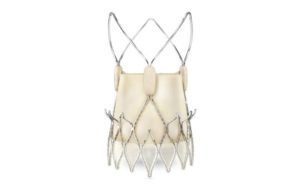
Boston Scientific (NYSE:BSX) announced positive outcomes from studies of its Acurate Neo2 aortic valve system.
Initial outcomes from the Neo-Align study of 170 patients who underwent transcatheter aortic valve implantation (TAVI) with Acurate Neo2 using a novel implant technique to attempt commissural alignment of the prosthetic and native valves demonstrated that commissural alignment can be achieved safely, effectively and quickly.
Data showed that 97% of patients had no significant misalignment (80% none, 17% mild, 1.2% moderate and 1.8% severe) and the average alignment time of 92 seconds had a minimal impact on procedure duration, according to Boston Scientific. Post-procedure and 30-day safety events were consistent with expected TAVI complication rates, while small manipulations of the delivery system in the ascending aorta did not adversely impact safety outcomes.
The company also reported new findings from the ITAL-neo registry, a two-arm, retrospective registry of 900 patients from 13 Italian centers.
Data from the registry showed that Acurate Neo2 produced superior performance compared to the previous generation (Acurate Neo), reinforcing the enhanced ability of the valve to minimize paravalvular leak (PVL) with its sealing technology. The study met its primary endpoint with a three-fold reduction in more-than-mild paravalvular aortic regurgitation with Acurate Neo2 (11.5% for the first generation valve, 3.5% for Acurate Neo2).
There was also a numerically higher in-hospital technical device success rate and improved success and safety outcomes at 90 days — the secondary endpoints for the registry — for Acurate Neo 2.
Boston Scientific also presented investigator-driven studies and e-posters with new data on coronary access and post-implant PVL with both valves, all at the EuroPCR 2022 conference.
A study evaluated coronary access after vavle-in-SAVR (surgical aortic valve replacement) TAVI, suing a simulation of coronary cannulation (catheterization) procedures in patient-specific 3D-printed models derived from post-procedural CT imaging. The study demonstrated that, despite the supra-annular design of the Acurate Neo valve, coronary access for diagnostic angiography and PCI was highly feasible.
Bosotn Scientific’s Predict PVL study, which aimed to evaluate PVL after implantation using postprocedural transthoracic (TTE) and transesophageal (TEE) echocardiography and computed tomography, observed a 48% reduction (statistically significant) in the cumulative effective regurgitation orifice area (EROA) with Acurate Neo2 compared to Acurate Neo.